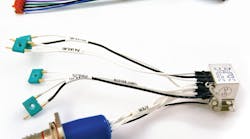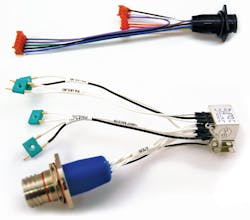An application that requires a disconnect on one or both sides of a pressure or vacuum wall probably demands a hermetic bulkhead connector. However, not all hermetic connectors are the same.
Many mass-produced hermetic connectors have true leak rates far above their published specifications. In fact, leakage-rate specifications for some off-the-shelf hermetic connectors understate actual leakage by an order of magnitude. In addition, they can be fragile and susceptible to leaks after mechanical shock or thermal cycles.
How do we know this? Douglas Electric has developed an aftermarket process to seal hermetic box-mount connectors made by other manufacturers. Part of that process involves pressure testing every connector, so we have conducted thousands of leakage tests on off-the-shelf hermetic connectors and found many lacking.
The epoxy-potting treatment “fills the gaps” in connectors that leak more than they should. The treatment often costs less than upgrading to a true hermetic connector. It is also suitable for nonhermetic box-mount versions, even inexpensive plastic and plated-steel connectors, regardless of pin configuration.
As a side benefit, epoxy back potting a connector often allows crimped, rather than soldered, wire connections for additional assembly cost savings. Mated hermetic connectors also are fully submersible, which is an increasingly common requirement in power distribution and oil-and-gas applications.

